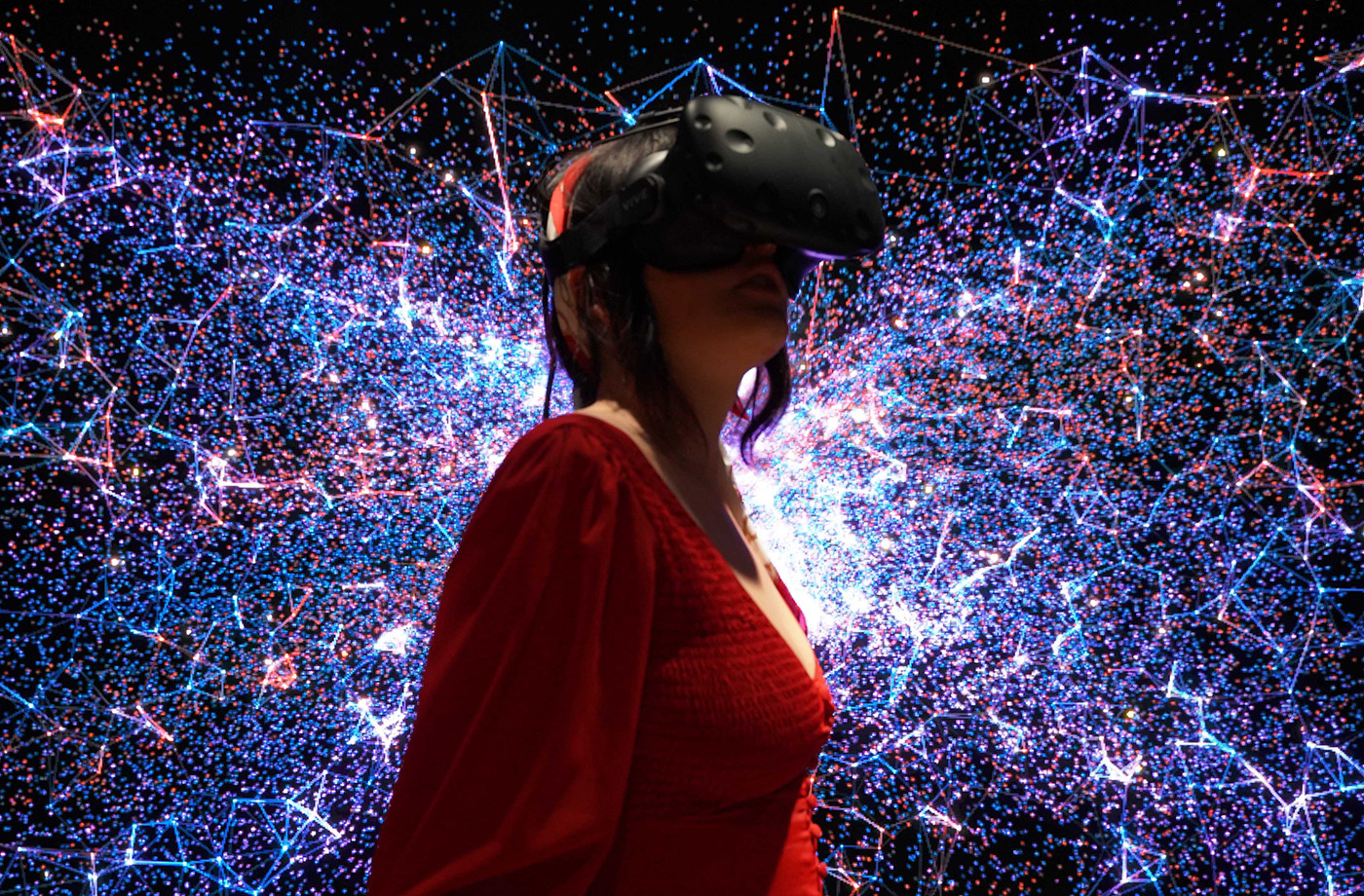Technology plays a significant role in the business world in today's globalized society, which can also be characterized as an information society. Part of this society includes augmented reality (AR), which is related to virtual reality and has advanced with the development of digital and information technologies. Unlike virtual reality, which involves creating an entirely new digital entity, augmented reality represents a symbiosis of the virtual world and the one surrounding us. It enhances the human environment in a digital format by adding virtual objects, information, and other content.
Augmented reality is just one phenomenon resulting from information technology's development. The modern information society is increasingly guided by transhumanism, which involves the intervention of technology in many aspects of human existence and activities. The digital age enables the growing presence of machines, robots, software, and computer programs that replace traditional human work, business, production, and communication models. We are witnessing how new technologies facilitate everyday communication, marketing, and business.
The world is becoming a "global village," meaning information, goods, and services are available to interested parties within seconds.
Augmented reality has also improved the real estate market, proving a valuable technology for buyers, sellers, and builders. In the real estate sector, applications and programs are being developed that allow content creators to design, furnish, and advertise conceived properties and products in the real estate market. Moreover, various studies have shown that most people in the Western world use the Internet as their primary resource for buying real estate, even half finding their ideal home that way. The development of this way of buying real estate has been further boosted by the COVID-19 pandemic, during which people had limited physical contact. Innovative real estate agencies seized this potential and developed advanced systems that attract potential buyers interactively and excitingly.
So, what does augmented reality bring to the real estate sector?
Does anyone remember the popular game "Pokemon GO," which captured many people with its innovative way of catching "Pokemon"? Now, imagine that instead of "Pokemon," you see a chair or a sofa through an app you have chosen and placed according to your taste. One of the critical advantages of augmented reality is creating an immersive 3D model through an app that provides potential clients with a complete view of the product "from their chair." In other words, buyers can virtually furnish a property according to their wishes and see precisely how it would look without visiting in person. This allows buyers to come up with many new ideas for furnishing properties, leading to a positive experience and high satisfaction.
Buying and furnishing real estate through augmented reality is exciting and interactive and can simplify buying.
Ikea, one of the leading players in furnishing properties, has even gone a step further by allowing customers to scan their apartment or house and virtually remove existing furniture to see how new furniture would fit into their existing space.

Augmented reality (AR) significantly simplifies the work of real estate agents who traditionally organize property visits and tours for potential buyers. On average, a buyer spends between 15 and 30 minutes inspecting a property, all within a time frame set by the agency, based on which they decide to purchase. Augmented reality technology completely replaces the old model with a new one, allowing buyers to explore and furnish a property according to their preferences. This market transformation has led to significant time savings and optimization of the buying process, where agencies are no longer constrained by time or the number of people they can show properties to. Some AR reality applications have advanced to the point where agents can accurately track when potential clients are viewing specific locations, allowing them to provide marketing materials and engage in conversations with the buyers. Such technological advancements have permitted some real estate agencies to reach a more significant number of customers, which was previously physically unfeasible, and gain better insights into their desires and needs. Therefore, agencies that have already implemented AR can better harness the newly discovered potential of the market.
Imagine that instead of "Pokémon," you see a chair or sofa through an app.
In addition to real estate agencies, construction companies, such as JLL and CBRE, also use augmented reality. Major construction companies can entirely create a property in virtual reality and then assist in constructing and furnishing the actual property using augmented reality. Building in this way provides them with extra precision, significantly reducing errors and thus reducing the costs of rework. Furthermore, when training people on how to use complex equipment or heavy machinery, AR can help educators through real demonstrations so that workers can see how the equipment is used before they start using it. Additionally, companies can use AR to demonstrate situations involving hazardous materials without exposing team members to direct risk.
In many ways, the future of augmented reality in the real estate market is already here.
The technologies that enable these use cases already exist, and several companies are beginning to test and refine various forms of augmented reality. XYZ Reality Limited, a company leading in AR technology development, has created an engineering-grade AR headset with a visor and holographic technology. With this device, construction companies can accurately position holographic 3D models of objects in real space. Due to its high precision, potential errors in the construction and installation process are significantly reduced, leading to substantial time and cost savings.
The future of augmented reality in the real estate market is promising, but it's important to remember that we are still in the early days of its development. Researchers have found that the real estate industry lags behind other sectors, such as healthcare and retail, in adopting AR and VR (virtual reality) technologies. This is due to the complexity of the construction industry, where implementing revolutionary technologies like augmented reality is challenging. Additionally, we must consider the financial expenses required to develop, refine, and use such technology.
Regarding augmented reality in Serbia, it's still too early to discuss its application in the real estate market. With the development of the IT industry, awareness of new technologies is rising, especially among younger generations, who are introducing many innovations into all business areas. Therefore, AR technology will soon enter the Serbian real estate market.
In the end, the widespread adoption of AR will depend on the industry's readiness to undergo digital transformation and the maturity of AR technology itself. Fortunately, we can already see this happening today. The events of 2020 forced construction companies and real estate agencies to work remotely and adopt digital solutions, making the industry ready for a significant transformation. Meanwhile, in AR, companies are constantly finding ways to improve. Headsets are becoming lighter and more robust, applications are getting faster and more intuitive, and AR and VR technology can now be integrated with construction software. As these solutions mature and advance, so will their adoption in the real estate world.


